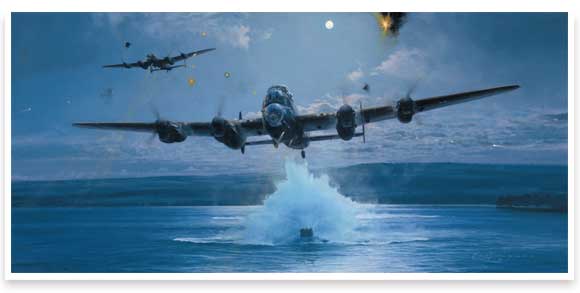January 30th, 2014, the Royal Air Force ran a story entitled “Final Flight of the Dambusters.”
The RAF squadron was born for battle. The group carried out one of the most prolific raids during WWII. Over seventy years had passed, the Dambusters have carried out their last mission. David Arthurton, Wing Commander of the 617 Squadron, is tasked with bringing the Dambusters back to their home in Lossiemouth. “Today, in the skies over Afghanistan 617 Squadron completed its last flight as a Tornado Squadron. It is fitting that this milestone event occurred on Operations, delivering decisive air power much as our forebears did in 1943. Back then the Squadron was employed on offensive operations whereas today we’re trying to set the conditions for enduring security and peace. I think there are many parallels – the team spirit that existed back then endures to this day and I think the focus on getting the job done is exactly the same.”
The final flight was a mission to support the coalition troops; the Tornado Force stationed in Afghanistan to fulfill the crucial Close Air Support and Reconnaissance roles. They were to provide protection and information to commanders on the ground. This mission was handed over to No II (Army Co-Operation) Squadron from RAF Marham. During the final operational tour, the Dambusters flew a total 188 mission and clock more than 1,500 total hours spent flying. The entire mission used 11,352 engineering man hours also. Mark Jackson, Squadron Leader, was the pilot who was selected to lead the last flight.
“As I stepped down from the aircraft for the last time, my emotions were mixed. Tinged with sadness is an overwhelming sense of achievement for what the Squadron have accomplished. I am sure that the original Dambusters felt a similar poignancy at the end of their iconic raid and would echo how very proud I am of those that serve today.”
The Dambusters have had a legacy of low level flying dating all the way back to their origins in WWII. While in Afghanistan, they performed 14 Shows of Force—flying fast and low to stop enemies from attacking the ground troops.
“If we’re doing a Show of Force we can be cleared down to a very low level, but I can’t imagine flying that low for three hours to a target to drop a weapon at a specific time, and then to fly all the way back again whilst also being shot at. You can’t really understand that; we talk about the threat of small arms fire but it’s nothing compared to what they had to face in 1943. They came back from their mission pulling out bits of trees and twigs from the aircraft, they were literally skimming the trees to get there.”

“Most of us on the Squadron asked to come here for a specific reason. Hopefully in some way we’re honouring the original Dambusters by continuing to be on Operations. Even though we’re due to disband in March this year we will reform as the RAF’s first Lightning II Squadron in 2018. The Squadron will continue to be at the forefront of air combat in defence of the UK.”

The Wing Commander says he looks forward to the return of the Dambusters.
“The spirit and ethos of this famous Squadron will no doubt endure as it embarks on the next chapter of its illustrious history.”
